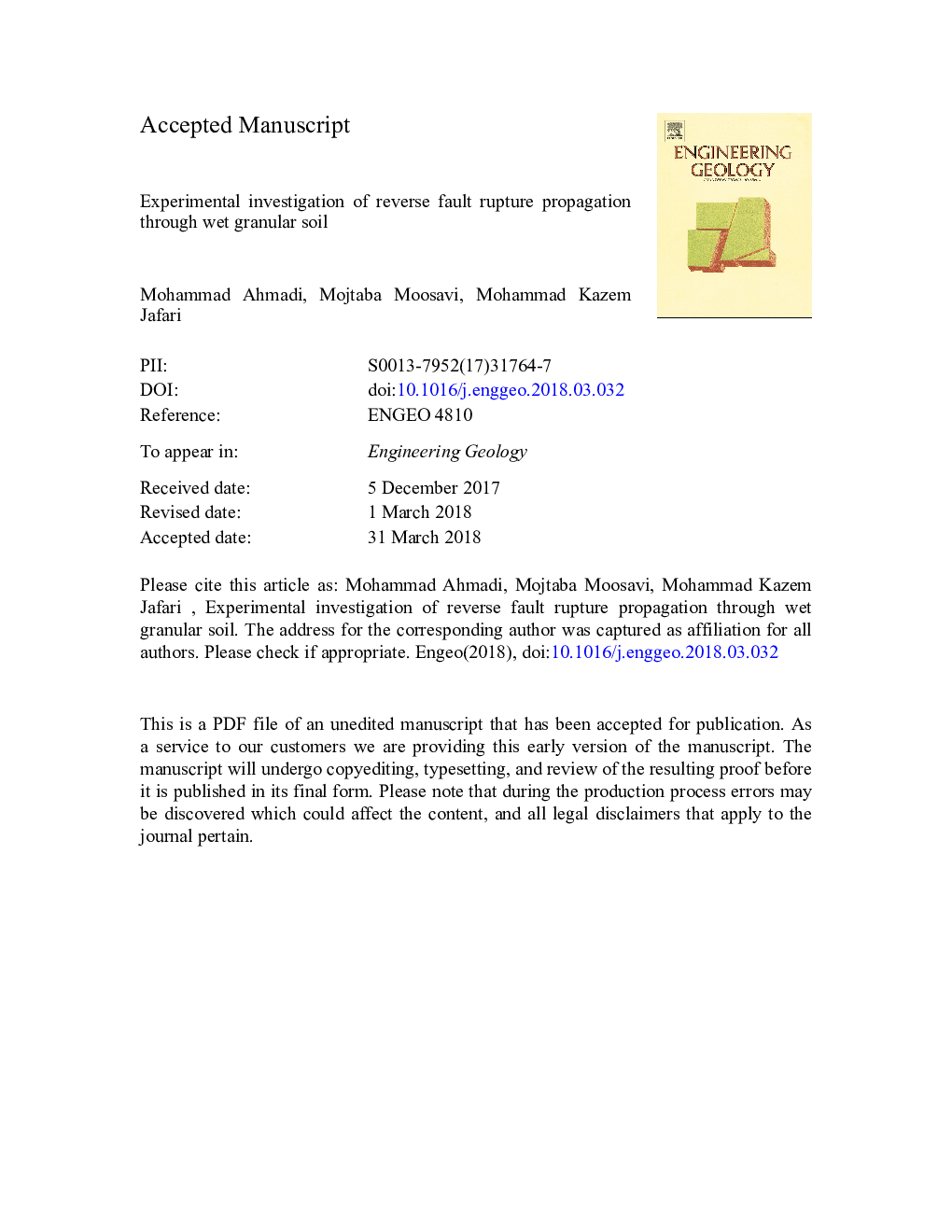| Article ID | Journal | Published Year | Pages | File Type |
|---|---|---|---|---|
| 8915888 | Engineering Geology | 2018 | 50 Pages |
Abstract
Surface fault rupture has been previously investigated in dry cohesionless soil; however, wet granular soil has not been investigated in detail; however, apparent cohesion induced by intergranular water causes granular soil to behave differently than dry cohesionless soil. Field evidence shows that all soil that has been wetted will experience some degree of cohesion. In the present study, eight experimental faulting tests were conducted on sand in which the water content varied from 0% (dry) to 15% and the soil layer height ranged from 25 to 35â¯cm. To determine the behavior of the wet sand, a series of direct shear tests were carried out at low confining stress corresponds to stresses at different depth of the physical model. The results showed that the shear band zone decreased in the wet specimens, creating a sharp scarp at the surface. The required normalized fault displacement for outcropping decreased significantly in these specimens and reached a minimum value at about a 5% water content. The direct shear test results showed that the failure strain of the wet sand can be used for prediction of h0/H. Surface tension cracks at the hanging wall widened in the zone of distortion at the surface in the wet specimens. Other aspects of fault rupture also are discussed.
Related Topics
Physical Sciences and Engineering
Earth and Planetary Sciences
Geotechnical Engineering and Engineering Geology
Authors
Mohammad Ahmadi, Mojtaba Moosavi, Mohammad Kazem Jafari,
